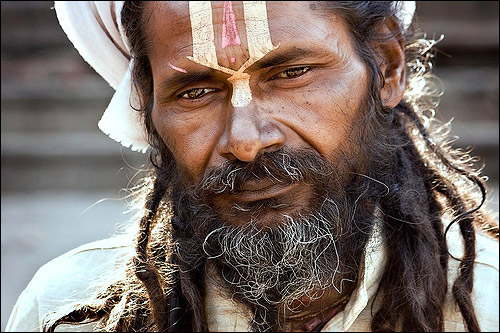Portrait photography delivers best results when you focus attention on the subject and control the background. Avoiding distracting elements or blurring the background draws the attention on your subject. Besides making your subject “the star” of the frame you also need proper exposure and focus, showing right skin tones and details.

Photo captured by Keith Willette (Click Image to See More From Keith Willette)
Whether you are shooting for posed portraits or moving children, if you can control 5 camera settings you will capture excellent portrait shots.
5 Camera Settings to Control for Superb Portraits
- Shooting Mode
- Focus Settings
- Exposure
- Metering
- White Balance
Shooting Mode
Aperture priority is the most popular shooting mode for portraits. Using this mode, the photographer sets the f-stop and the camera chooses the shutter speed.
Aperture priority mode gives direct control of depth of field. Controlling depth of field means that you can blur the background to draw attention to your subject.
Alternatively, you can use Manual Mode. With this mode you can you can control both aperture and shutter speed. If there is a consistent light source, use manual.
Exposure
When you shoot portraits and slightly overexpose you will notice that your background details will be washed out and your subject’s skin tones will appear lighter. After your camera meter suggests exposure values, first shoot with the suggested settings. Later, shoot a couple extra using +1EV or +2EV of exposure compensation to see what they look like.

“Sadhu” captured by satyaki basu (Click Image to See More From satyaki basu)
Focus Settings
Single-Shot AF (Auto Focus) mode is perfect for shooting portraits. When using Single-Shot AF Mode, select a Single Auto Focus point. For example, for portrait shots, focusing closer to the subject’s eyes works best. When focusing on the target point, you may use either Center or Off-Center settings. This way you will get sharp focus.
One of the most difficult portrait shots is a moving subject. If you are photographing moving children, use Continuous AF mode. In addition choose multiple focus points. A combination of continuous AF mode and multiple focus points will increase the chance of capturing a sharp image.
Metering
For general portrait shots Multi-Segment Metering works just fine. However, if you are shooting a back-lit subject, Multi-Segment may not work properly; this mode will underexpose the subject’s face. In such a case take a reading from your subject’s forehead or cheek using Spot Metering.
Then use the values and shoot in Manual Exposure mode. Make sure that you are not shooting in Aperture Priority mode; you will need to set both aperture and shutter speed values manually since you have used the spot metering and received new exposure values.
White Balance
Auto White Balance is good for general shots. However, when shooting in different environments things may go wrong. For example, if you are shooting in a shady area, you will not get the proper white balance. Or if you shoot in scenes with predominant white blue or green (beach, botanic garden, forest, etc.) your subject’s face will reflect that predominant color. In a case like this, you can take a custom white balance reading and use it.

Photo captured by Edgar Barany (Click Image to See More From Edgar Barany)
Keep in mind that you have the option to change white balance settings and apply correction if you are shooting in RAW mode. So if that portrait shot is quite important for you, shoot in RAW so you have an option to correct white balance later on.
About the Author
For Digital Photography tips and Camera Settings Visit Our Web Site
Like This Article?
Don't Miss The Next One!
Join over 100,000 photographers of all experience levels who receive our free photography tips and articles to stay current:






wonderful. thank you very much.
I love these little articles. I look forward to them! Thanks! :)
very good
Thank you. I did not know about the focus settings yet and now I do. Hopefully that will help me get better photos of my toddler and his friends.